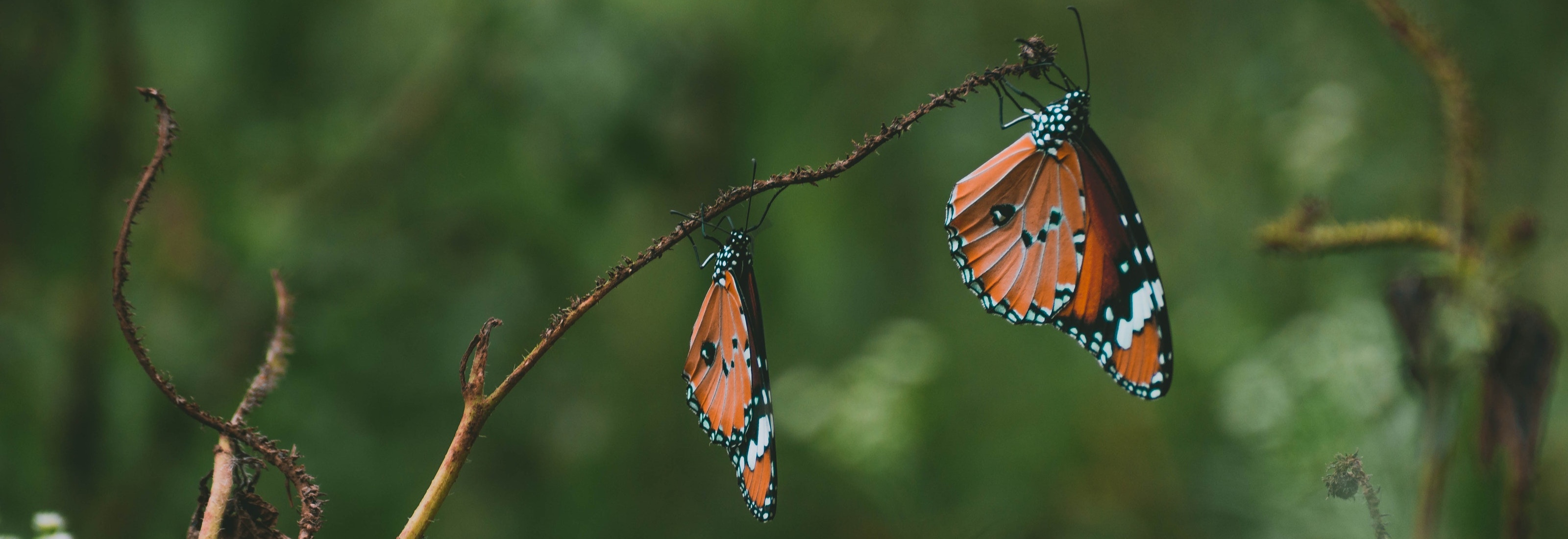The number of U.S. Monarch butterflies has decreased 90% since 1990 due to loss of habitat, use of herbicides and pesticides and climate change. You can help reverse the trend by planting a garden where monarchs and other pollinators can thrive. Growing a butterfly-friendly garden boils down to growing a garden with plants that give butterflies places to transform and to eat. Here are some tips for attracting butterflies to your garden:
1. Study your area to see what species of butterflies live there.
While butterflies tend to be generalists when it comes to nectar feeding, but they are often specific about their larval host plants. Therefore, butterflies that breed outside your region are unlikely to lay eggs in your backyard just because you grow their larval host plants.
2. Pick the plants that are known to support the butterflies that live in your area.
Check the plant lists at regional parks. Local nurseries also have lists of plants that attract butterflies. Your plant list should feature plants that provide food for adult butterflies as well as larval food plants.
3. Provide a welcoming habitat
Make your garden a haven for butterflies by providing shelter from strong wind, large rocks in the sun for wing warming, a small water feature (or better yet, a permanent mud puddle), and an environment free of pesticides and herbicides. Do not over-prune your plants, as you risk cutting away or exposing the chrysalides of metamorphosing butterflies.
In addition, here are two tips for attracting monarch butterflies in particular:
1. Grow nectar species for adult monarchs
During their annual migration, some monarchs fly over 2,000 miles and as high as 10,000 ft. It is one of the longest known insect migrations on the planet. To make these long flights, monarchs need fuel. And monarch fuel comes from the sweet nectar of flowers. Growing nectar species in your yard that are native to California will offer sustenance for these flight weary migrants. Native plants will not only help feed adult monarchs, they will also be more adaptable to our changing climate and will attract other butterflies, insects and birds.
2. Grow native milkweed for monarch caterpillars
The only things that the monarch will lay eggs on is milkweed. Simply put: no milkweed, no monarchs. However, take care to plant only milkweed that is native to California. Avoid tropical milkweed varieties that are available at many nurseries as they create a host of problems. The Xerces Society has regional milkweed guides to help you determine which species are native to your area. For California, narrow-leaved milkweed (Asclepias fascicularis) is a good choice: it was historically the most widespread variety and it is also available in most plant nurseries.
In addition, do not grow milkweed if you live close to the coast. Milkweed has never grown close to the coast, and planting it there could distract monarchs on their annual migrations. If you live in San Francisco County, San Mateo County and parts of Santa Cruz County, please do not plant it. Focus on nectar plants instead. If you live in Santa Clara County or other parts of the state that are more than 5 miles inland — grow milkweed!
